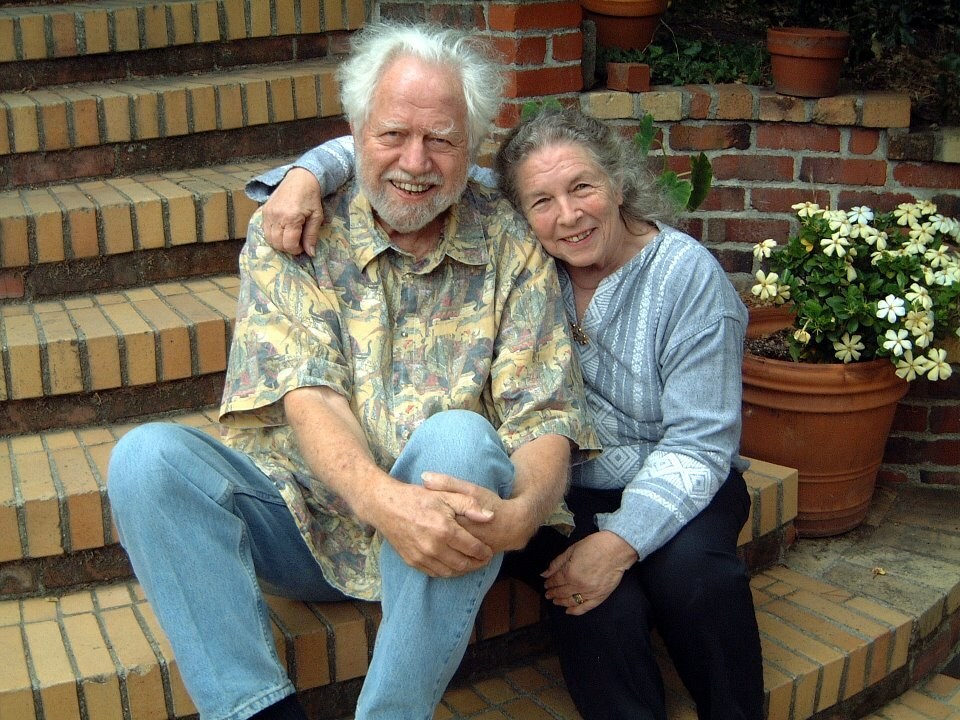Psychedelics can produce awe, insight, healing, and sometimes terror. What they rarely offer is predictability.
A US biotech company wants to change that. Mindstate Design Labs, a Y Combinator startup, is combining machine learning with human expertise to map how psychedelic compounds shape conscious experience. By analyzing thousands of trip reports alongside pharmacological data, the company aims to design psychedelics that produce highly tailored states of mind — transforming unpredictable trips into precise, repeatable experiences that could help improve mental health treatments.
Beyond new treatments, the company also hopes its approach will shed light on consciousness itself.
“If we could figure out which differences in psychedelic pharmacology drive which differences in consciousness, we’d understand the mechanisms of consciousness in an entirely new way,” Mindstate CEO Dillan DiNardo wrote in 2024. “And we could begin using those mechanisms to design an innumerable variety of psychoactive effects — intentionally and with precision.”

At the heart of Mindstate’s platform is Osmanthus, a large language model trained to predict how psychedelic experiences unfold, drawing on thousands of trip reports and scientific texts. The company recently cleared a major hurdle: FDA approval to launch a Phase 1 clinical trial, which will take place in the Netherlands. The trial centers on “moxy” (5-MeO-MiPT), a compound the team hopes to use as the foundation for a new category of precision-designed psychedelics.
The main idea is to strategically combine moxy — a relatively mild and predictable psychedelic — with other drugs, psychedelic or not, to produce specific effects in mood, cognition, and perception. As DiNardo put it, moxy might prove to be a “blank canvas on which to paint infinite possibilities.”
Different drugs, different trips
DiNardo started his career in finance before moving into biotech, working at a billion-dollar life sciences fund and holding operational roles in several early-stage drug development startups. But his interest in altered states runs deeper. He grew up in Pennsylvania in what he calls a “new religious movement centered on the group practice of altered states of consciousness,” where members frequently entered hyper-arousal, dissociative trance states. “That area of altered states of consciousness was very central to my life, from the time I was a pretty small child,” he told Big Think.
In his twenties, DiNardo was diagnosed with PTSD and depressive disorder, turning to psychedelic therapy for relief.
“There were various ways in which psychedelic therapy was being done legally in different jurisdictions, and so I always came to it from, you know, not the not the Burning Man angle, but more of the therapeutic or ceremonial angle.”
While he’s quick to note that “we need Phase 3 trials for proof that psychedelics work in this way,” DiNardo experienced their transformative power firsthand, noting that he hasn’t qualified on any rating scales for his previous disorders in years. But what truly gripped him wasn’t just the therapeutic benefit — it was the variation. “Why do different psychedelics do different things? Can we look at the biological basis of the difference in psychedelic effects in order to better navigate these types of states of consciousness, to be able to design specific states of consciousness?”
This question led him to connect with Mindstate’s scientific founder, Tom Ray, an evolutionary biologist who believed altered states arise when psychedelics activate receptors in the brain on specific “mental organs,” corresponding to functions like joy, consciousness, and reason. Together, they selected the compound moxy as a starting point for designing tailored psychedelic experiences.
Carrying on the Shulgin torch
Though you may never have heard of it, moxy is far from new. It was synthesized in 1985 in a lab in Lafayette, California, by medical chemists Alexander “Sasha” Shulgin and David B. Repke. Shulgin synthesized most of the world’s psychedelic drugs and tested many of them on himself and his wife Ann, documenting their effects in books like “TiHKAL” (“Tryptamines I Have Known and Loved”) and “PiHKAL” (“Phenethylamines I Have Known and Loved”).
Moxy stood out because it combined some effects of classical psychedelics like LSD and psilocybin with the entactogenic (or “empathy-promoting”) properties of MDMA: “a decreased sense of self-criticism, an increased ability to think about things that you normally avoid thinking about, and an additional sense of sympathetic warmth.”
Ray, who had collaborated with the Shulgins, helped identify the most qualitatively distinct compounds the couple had developed. DiNardo says:
“Tom had those [analyzed] against all of these sites across the human brain to be able to understand a bit better: How do these drugs interact differently with the brain, and how do those differences in biology correlate to the differences in consciousness?”
(Ann Shulgin was a co-owner of Mindstate Design Labs until her death in 2022.)

“What we found over the years is that there are a handful of psychedelic drugs Sasha Shulgin called ‘psychedelic tofu,’ which have a narrow pharmacological and phenomenological profile,” DiNardo says, explaining that the range of effects and receptors targeted is much narrower compared to most other psychedelics (only targeting the 5HT2A receptor).
In other words, moxy’s mild effects might make it easy to build on — absorbing the character of other compounds without overpowering them.
“They don’t have as much flavor on their own. At standard clinical doses, moxy is not going to give you the ego loss of 25 milligrams of psilocybin. It’s not going to give you the entity interactions of DMT or some of these wilder and crazier effects of psychedelics.”
In underground settings, however, moxy is often used as a “base ingredient” that, when combined with other drugs, can alter the altered state, so to speak, modulating the subjective effects of those drugs.
“That’s similar to what we’re doing,” DiNardo says. “We’re taking this tofu — because it gives us a lot more modular control over the pharmacology — and determining […] the effect on consciousness that these molecules are going to have. We’re developing moxy not just by itself but as the base component for a series of combination drugs that are intended to induce different effects on consciousness.”
How does Mindstate come up with the recipe for those combinations?
Training AI on human experience
Extending the Shulgins’ tradition of documenting altered states, Mindstate is applying machine learning to organize and analyze psychedelic experiences at a scale never before attempted. Using their LLM, Osmanthus, they can process hundreds of thousands of drug reports from internet sites like Reddit, books like the Shulgins’, and scientific papers to create a kind of psychedelic fortune-telling machine, which can connect biology, pharmacology, and phenomenology to minimize the guesswork in how a trip will unfold.
Osmanthus’s diet includes two types of data sets: pharmacological and subjective. The platform’s core innovation is connecting those two layers — linking how a drug behaves in the body with how people describe its effects. Osmanthus maps subjective experiences using “semantic embedding models” (machine learning tools that extract meaning from language) trained on language from trip reports, while its pharmacological data includes thousands of receptor binding assays. Together, these datasets have allowed Mindstate to build what the company describes as a catalog of over 600 distinct psychedelic effects, each tied to the brain sites likely responsible.
The goal isn’t just to predict how a given trip will unfold but to build a programmable framework for engineering entirely new experiences.
Their theory, based on the data so far, is that you tend to see increasingly unique effects as psychedelics interact with more receptors. For example, DMT, which has one of the broadest effects across various receptors, often causes powerful and bizarre psychedelic experiences, such as entity encounters. Drawing off the LLM’s predictions, Mindstate may someday be able to control those effects, using moxy as a buffer to safely engineer customized psychedelic states.
“If you can’t label something and talk about it, you can’t measure it.”
Dillan DiNardo
For now, their foray into machine learning has provided surprising insights, some of which may be useful to psychedelic scientists. By analyzing the commonly reported “mystical experience” at a more nuanced level, for example, their model found that people often report experiencing ego death (loss of a sense of separation from environment) but not loss of contact with their environment. This observation isn’t captured by the Mystical Experience Questionnaire researchers typically use, DiNardo says.
Other observations may be less useful. “Environmental Cubism,” for instance, is a rare effect marked by Picasso-like visuals (they haven’t nailed the drugs or receptors linked to that effect, he jokes, as it’s not particularly therapeutically relevant).
Eventually, Osmanthus may be able to tell them, at the most fine-grained level, what the structure of “all human experience” is when taking psychedelics. From there, he says, “you can map out the entire tree from the single node of any subjective effect to the categories to the individual words and phrases people use.”
To that end, one of Mindstate’s core aims has been to crack the code of the ineffable. “If you can’t label something and talk about it, you can’t measure it.”
It’s no easy feat — translating everyday, nonpsychedelic experiences into words is hard enough. As the Irish playwright George Bernard Shaw famously quipped, “The single biggest problem in communication is the illusion that it has taken place.”
The limits of language
One concern surrounding models such as ChatGPT has been “hallucinations” and other inaccurate interpretations of text, leading to misleading claims about the world. Considering psychedelic experiences are already trippy enough, Mindstate must ensure nothing gets lost in translation. A key question: Are trip reports enough to establish what psychedelic researchers call “ecological validity,” meaning accurate representation of how various drugs are experienced in various settings? What’s more, will these predictions carry over to a clinical setting, where mental health treatment is perhaps most relevant? Can an LLM pull data from Reddit to accurately inform the highly controlled environment of a clinical trial?
Mindstate isn’t claiming to be able to calculate the exact incidence of an effect, DiNardo says.
“These are raw, unstructured reports. They’re in specific settings. People tend to report some things over other things. What these reports give us is a very close characterization of which pharmacologies contribute to which experiences across all settings, and then that points us to what to replicate in the clinic. Ultimately, the final answer always comes down to, when you are in the clinical setting where these drugs are going to be administered, how do the set and the setting and the pharmacology interact?”
“You absolutely cannot just dump trip reports in a machine learning pipeline and expect it to work.”
Dillan DiNardo
When it comes to translating experience at scale, there are pros and cons to using LLMs.
“The large language models are definitely not perfect,” DiNardo says. “There have been huge improvements, even just over the past year, certainly. I would say, though, that it is essential to have a human in the loop.”
One way to go about this is to start off with the model, run it across a bunch of trip reports, and then have human domain experts take a look. These are people who have undergone many psychedelic trips; understand psychonaut subculture; know the language and references, including common metaphors people use to describe their experiences; and can categorize what those people are talking about.
“We fork the processes such that we’re using a human-created ontology of subjective effects that is very detailed — and, we think, the best in the world — and we’re using that human ontology and human feedback to train the model,” DiNardo says. “Then we have other models where it’s just the large language model, or whatever machine learning method there is, and it comes up with its own ontology and is a bit more objective.”
Both of those approaches have their advantages and disadvantages, he says. The human might be more accurate while the LLM might be more complete.
“You absolutely cannot just dump trip reports in a machine learning pipeline and expect it to work. It takes a lot of human expertise in combination with AI.”
Mental health: More than the sum of its parts
DiNardo thinks we’ll likely come to understand human consciousness in tandem with a deeper understanding of artificial intelligence. Mindstate hopes to be the one to “break the clock apart and see the mechanisms within” in a targeted and safe way. Down the road, there could even be potential to combine psychedelics with brain-computer interfaces (BCIs). For the time being, the target is mental health, and models like Osmanthus could help nudge psychedelics into the realm of precision medicine.
However, researchers still don’t know how psychedelics — or any altered state of consciousness (ASC), for that matter — help improve the symptoms of various disorders. So it would be fair to raise concerns that “designer ASCs” may be putting the cart before the horse.
“There is a much wider world of psychedelic effects beyond the ones that we already know about.”
Dillan DiNardo
When pressed to comment on mental health research, DiNardo points to the complexity of factors involved and how little a diagnosis tells us about the root causes of a disorder. Psychedelics are similar in that way, he says.
“Most people would agree psychedelics have a multi-scale mechanism of action: pharmacological, cellular, neuroplasticity, brain networks, psychological. The question of ‘How do you extract one piece of that out?’ is not necessarily a question that’s interesting to me.”
What’s much more interesting to him, he says, is the mapping between those things, adding that, when it comes to mental health treatment, “sometimes you may only be able to intervene at one level of that multiscale mechanism,” whether it’s with SSRIs or psychotherapy.
Mindstate’s Phase 1 clinical trial aims to test the safety and efficacy of moxy on humans. The trial isn’t yet testing Mindstate’s full vision. It’s an early-stage study designed to evaluate moxy’s safety, how it behaves in the body, and how participants respond. But DiNardo already has his eye on the part where their research team is “decorating the psychedelic tofu” with various combinations of drugs to test how Osmanthus’s predictions hold up in a controlled clinical setting.
“At that point, we will have validated that we can design states of consciousness and that there is a much wider world of psychedelic effects beyond the ones that we already know about,” he muses. “That’s coming immediately afterward. We hope to start those studies very shortly.”
This article was reprinted with permission of Big Think, where it was originally published.






